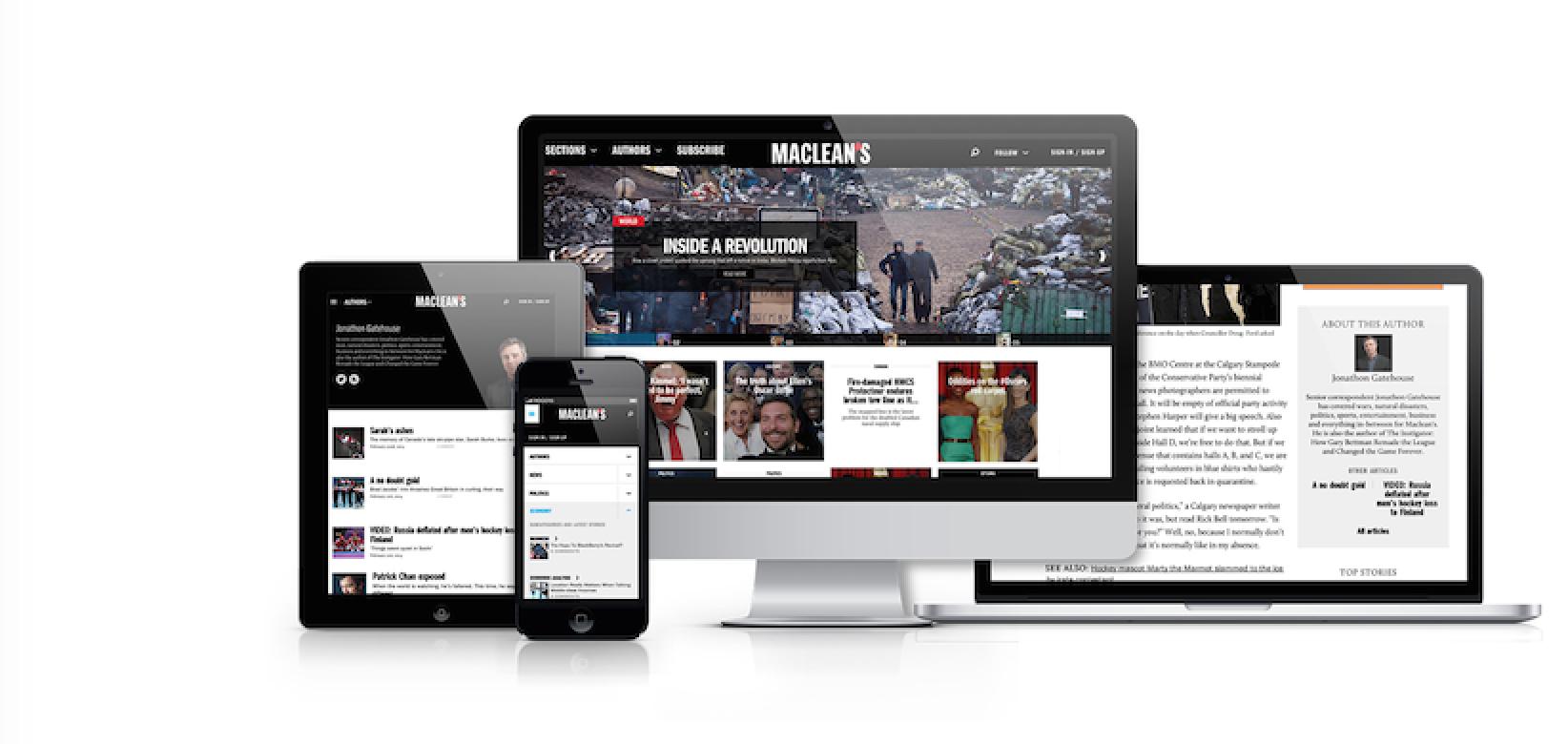Editorial: Maclean’s embraces the digital future
Maclean’s has always changed, always pushed ahead. Our shift to digital is no different.
Share
As familiar as the copy of Maclean’s you are reading may seem—either in print or on a tablet, phone or computer—we’ve undergone some pretty big changes over the past century. Now we’re about to embark on our biggest transformation ever as we fully embrace the future of digital journalism. We hope you’ll find these changes as exciting, useful and necessary as we do.
Maclean’s began life in 1905 as a monthly digest of news and commentary from around the world called The Business Magazine. After a few years our first publisher, Lt.-Col. John Bayne Maclean, changed the name to Maclean’s and shifted his focus to original Canadian content meant to engage a national audience. By 1920 we were published twice per month, only to revert back to a monthly in 1967. In 1975 we returned to a twice-a-month format and by 1978 we went weekly, cementing our reputation as one of Canada’s most trusted news sources. Of course, more than just our frequency has been altered over the years. Half a century ago, a copy of Maclean’s was about as large and ungainly as a restaurant menu. Once, we turned our magazine on its side to make a point about innovation. Another time we added an augmented reality app that made our pages come alive with action. In short, we’ve always been looking to change things up at Maclean’s.
Starting in January, we will be implementing our biggest change yet. Our weekly issue will move to a digital-only format available via tablet, phone or Texture subscription. That content, and much more, will also be available at Macleans.ca. The printed version of Maclean’s will shift back to a monthly, as has been the case at various times during our 111-year history.
Why are we making this move? Because readers have demanded it. Over the past few years, we’ve seen a dramatic change in how our readers consume and interact with the magazine. Simultaneously, there’s been a significant drop in advertising sales across the entire print media business, as eyeballs move online. The national conversation in politics, public affairs, business and the arts is increasingly going digital as this allows for greater urgency and interactivity. So we’re accelerating our shift along with it.
Maclean’s is proud to be one of Canada’s digital journalism pioneers. Our writers have been blogging since the early 2000s, and all our journalists, editors, photographers and designers have been producing outstanding digital content for years. Last year we produced a daily digital-only “Bulldog” edition to give subscribers up-to-the-moment coverage of the 2015 federal election. (Consider it a throwback to our “Bantam” edition we published for Canada’s overseas troops during the Second World War.) These digital efforts have been heavily rewarded by both our readers and our peers. Macleans.ca has seen traffic more than double in the last five years or so, and so far this year it’s grown another 25 per cent. We’ve also received numerous awards for our electronic journalism, from Best Overall Website at the Canadian Online Publishing Awards back in 2010, right up to two golds and a silver at the most recent ceremony.
For readers who have not yet tried Maclean’s online, we encourage you to experience its wealth of exclusive content, extensive use of video and other forms of multimedia storytelling, including our popular “60 Second Challenge” and cutting-edge infographics that provide new and unexpected revelations about the world around us. Embracing the digital future has also allowed us to take a closer look at our past. We recently put online Maclean’s full archives dating back to 1905, allowing Canadians to browse casually or do serious research; and offering an unparalleled window into Canada’s political, economic and social history. The Maclean’s Archives also provide evidence of the long list of famous authors who have graced our pages: Pierre Berton, Allan Fotheringham, Peter C. Newman, Mordecai Richler, Margaret Atwood, Peter Gzowski, Joseph Boyden, Stephen Leacock and even Lucy Maud Montgomery. Our covers have boasted the work of world-renowned artists including A.J. Casson, Alex Colville and Yousuf Karsh. Such a talent pool can be considered an important reference point for the changes to come.
Despite all the excitement that comes with such a big transformation, we have not forgotten the legacy we represent, or the role we play in the lives of our readers. We are honoured, for example, to be ranked second in Canada among all media brands by the 2016 University of Victoria Gustavson Brand Trust Index, ahead of the CBC, the Globe and Mail and National Post. We intend to maintain this trust. As we move forward to make greater use of digital delivery, we promise the one thing that will never change at Maclean’s is our commitment to providing you with Canada’s best newswriting, commentary, visuals and special features. It’s just going to get a lot more convenient.
